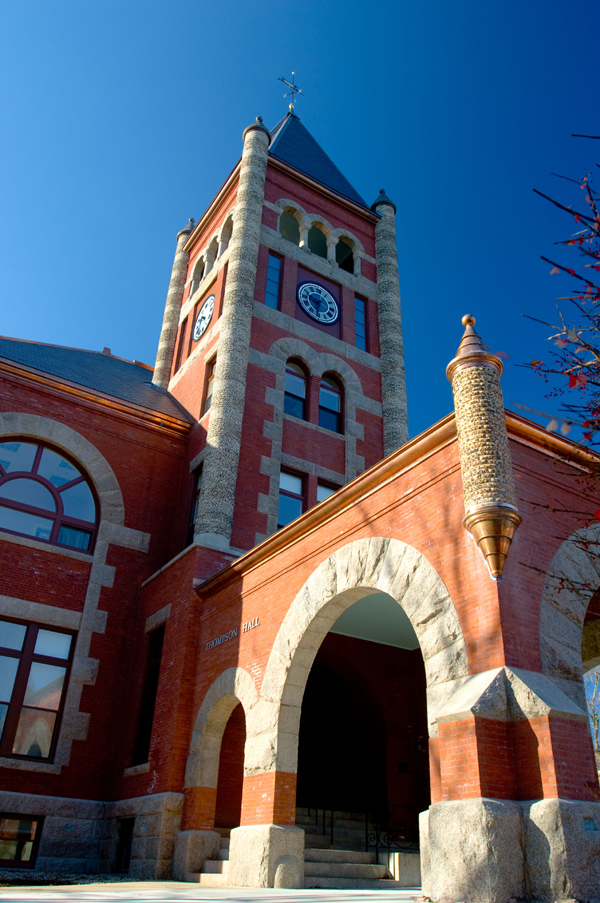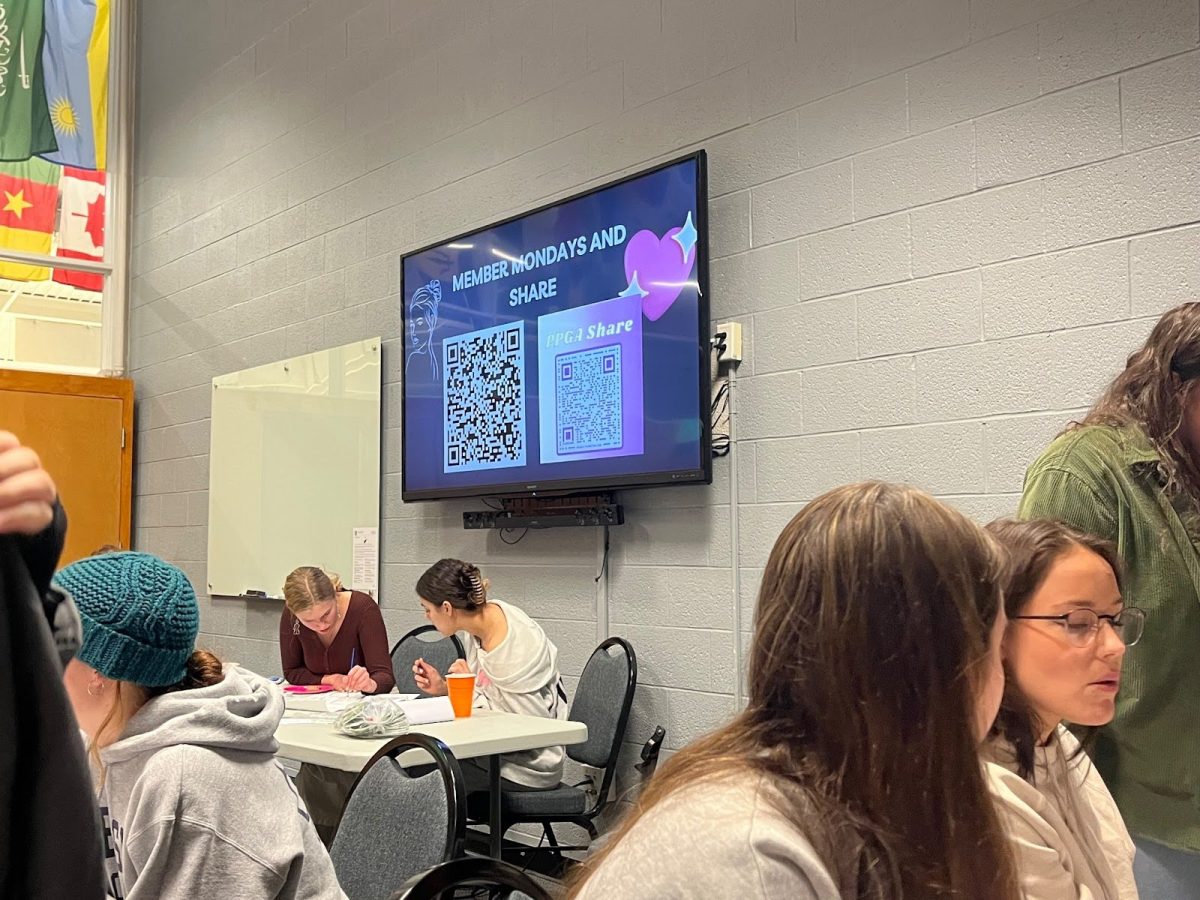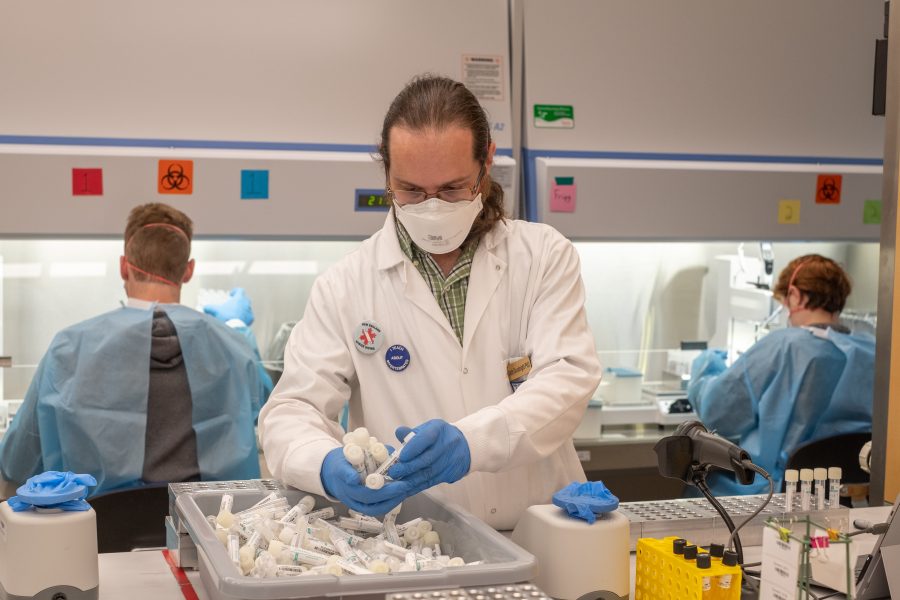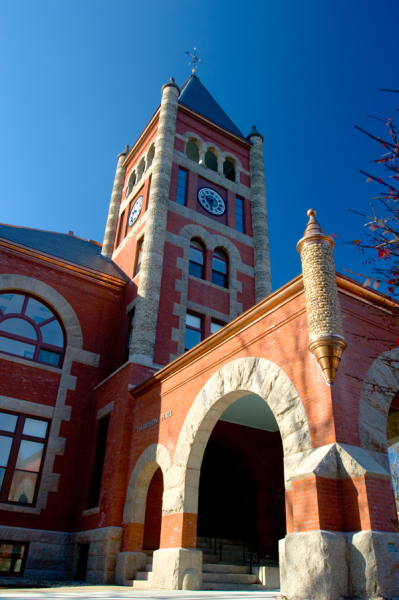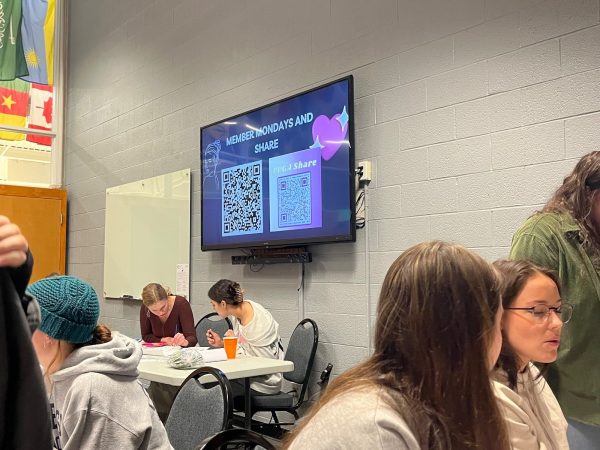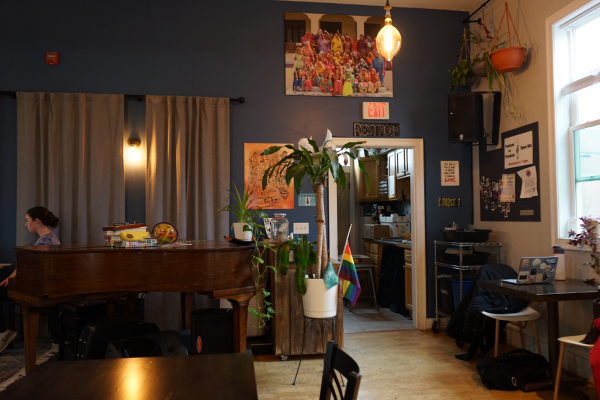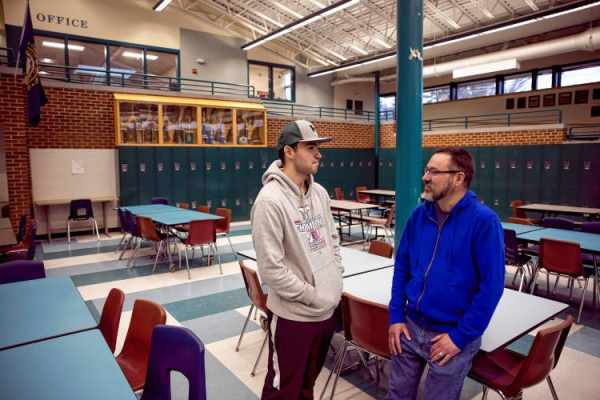UNH lab adds Keene State, Plymouth State and K-12 schools to its testing regimen
October 13, 2021
Through the last year of the COVID-19 pandemic, few things have remained constant for many students at the University of New Hampshire (UNH). While dropping off COVID-19 test samples has been uniform for students, for those who analyze the tests, it’s anything but stable.
“It’s a rollercoaster,” said Elise Sullivan, a research scientist in the lab. “When there’s a lot of positive cases on campus everyone looks at the lab […] It can be very stressful,” she said.
Then it changes to the other extreme, said Sullivan. “This summer when there was very little Covid in this state [we were] wondering if we would even have a job,” she said.
Now the lab is taking on new responsibilities.
The UNH COVID-19 testing lab started testing samples from Keene State, Plymouth State, some K-12 schools and 40 long-term care facilities – all while still testing UNH students, staff and faculty. The lab is also in the early stages of planning a pilot program to test members of the local community.
All of these new additions have made the day-to-day less predictable, said Sullivan. “All last spring semester I would say we were very consistent in volume.”
She said this was because the lab was primarily testing UNH students and staff who had regular schedules for drop-offs. However, during the spring and summer the lab started to take on testing samples from long-term care facilities. “We went from four to 40 long-term care facilities,” said Sullivan.
Still in the works is the community testing pilot program.
Jeffrey Lapak, director of the Interoperability Lab, explained the program would “offer something at a local community level where folks could come in and potentially get testing outside of their regular care provider.”
Lapak said the plan is in the early stages and can’t yet share what the cost of the tests will be.
Still though, the majority of the tests were still coming from UNH students, faculty and staff, said Sullivan. As of the third week of September, UNH tests made up about 60% of the total tests done. However, this number is constantly changing as the lab takes on more work.
Despite the growth of the lab, Sullivan said the three-and-a-half-hour turnaround time of the tests will remain the same. However, due to the batch nature of testing, the process can be slower when the test load is smaller, said Sullivan.
She also said the lab works hard to have results quickly. “We work every night until 10:30-11 p.m. at night to have a very fast turnaround,” said Sullivan. She puts emphasis on speed because, in her mind, part of having an accurate data set is getting it done quickly enough for the data to have an actual impact. “If it takes us less than 24 hours to get a positive result out, then you can catch that person before they have spread it to other people,” explained Sullivan.
While the lab will continue testing for COVID-19 for the foreseeable future, Lapak said that UNH plans to maintain the lab for future use.
Photo courtesy of Elise Sullivan.


